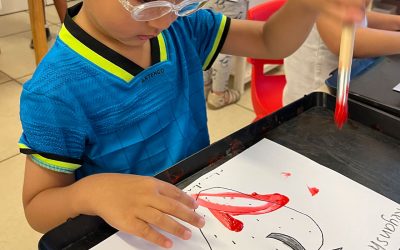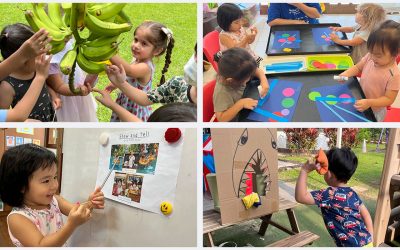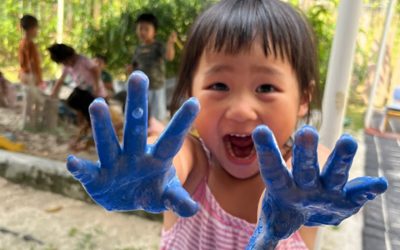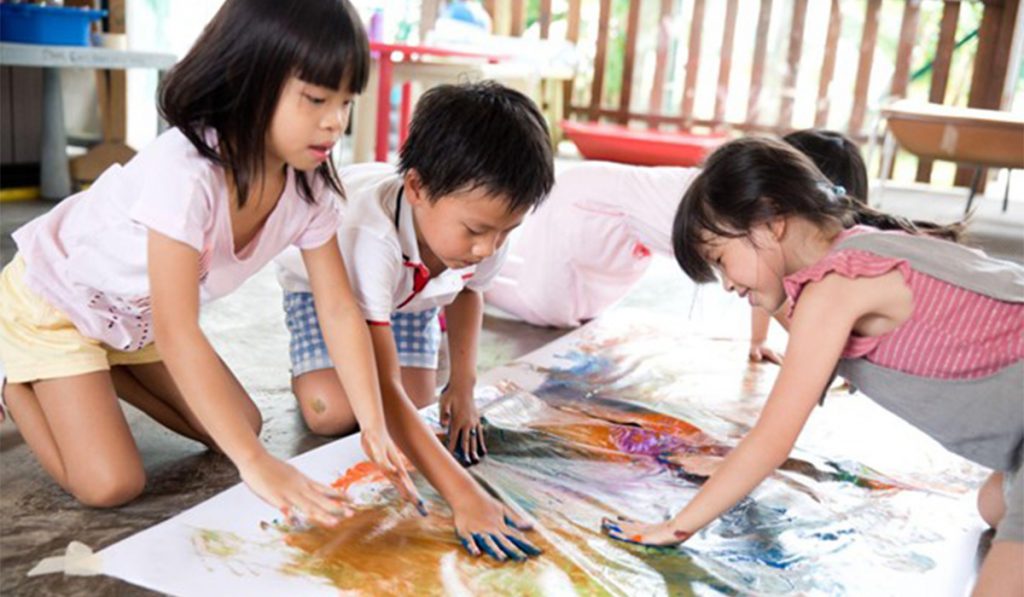
A splash of paint. A sprinkle of glitter. A dab of glue on tiny fingertips.
To an adult, arts and crafts in a kindergarten may look like a mess. But to a child, it’s magic.
Art in early childhood is a world of colour, texture, and possibility. It’s where little hands learn to tell big stories—sometimes with swirls and smudges, sometimes with silence and focus.
Every scribble is a decision. Every shape is a thought.
At Heartfield Kindergarten, we see these creative moments as far more than fun. They’re the building blocks of confidence, imagination, and emotional expression.
In this article, we’ll share how art and craft nurture creativity, confidence, and emotional expression in young children. You’ll discover the developmental benefits behind every brushstroke—from fine motor skills to language growth, social learning to spatial reasoning—and how Heartfield Kindergarten brings these experiences to life.
Why Kindergarten Art Matters
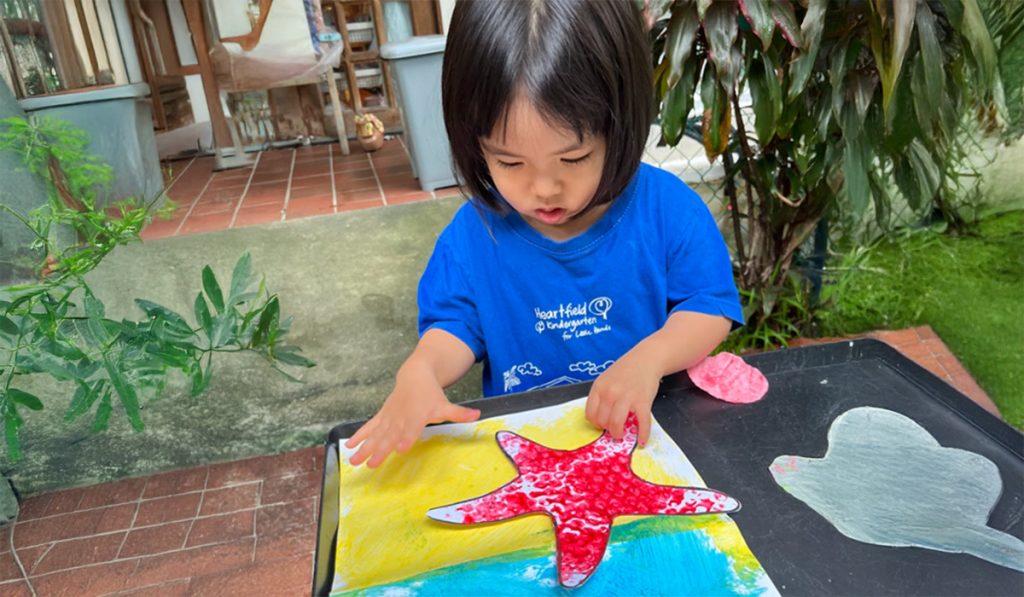
As a parent, you may wonder why kindergartens spend so much time on art. After all, it isn’t one of the most popular subjects in school like science, maths or languages.
These early acts of “mark-making” are how young children express themselves, long before they have the words to say what they feel or think. Through art, they learn to observe closely, make intentional choices, and communicate ideas in a visual language that’s all their own.
Indeed, art helps to cultivate a powerful form of thinking. Whether they’re mixing colours, layering textures, or deciding where to place a sticker, children stretch their imaginations and sharpen their problem-solving skills.
Every brushstroke builds confidence. Every creation gives the child a voice.
Exploring different materials such as soft clay, smooth paper, bumpy yarn further sparks new neural connections in the brain. These hands-on encounters enrich learning, laying the groundwork for holistic growth across all domains of development.
Objectives of Kindergarten Art and Craft Lessons
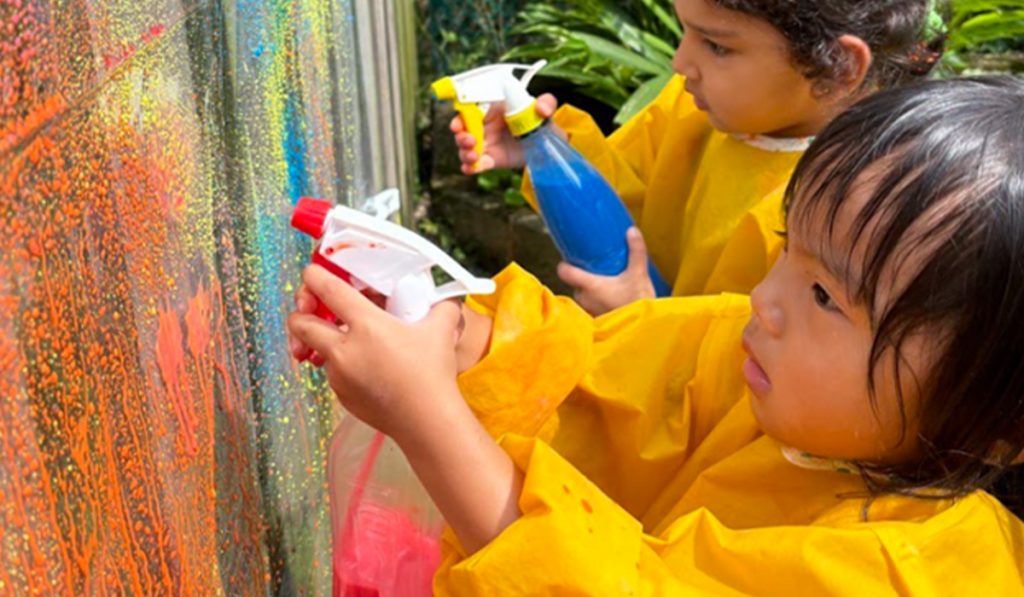
If art gives children a voice, the lessons behind it help them use that voice with purpose.
The goal of a kindergarten’s art activities is to support your child’s cognitive development. Through actions like cutting, pasting, painting, and threading, they can strengthen their fine motor skills and hand-eye coordination. This builds the control they’ll later need for writing, drawing, and daily tasks.
Children can also learn to think creatively and make decisions through art lessons. When a child chooses colours, adapts a plan, or finds a new way to solve a problem, they grow in confidence and flexibility. Completing a project further teaches perseverance and gives them a sense of pride in what they’ve made.
Emotional growth is equally important here. Art gives our kids a safe, non-verbal way to express feelings, especially when those feelings are too big for words. As they explore visual ideas, they start to grasp simple design concepts like balance, symmetry, and pattern, which are early steps into the world of visual literacy.
Examples of Kindergarten Art and Craft Activities
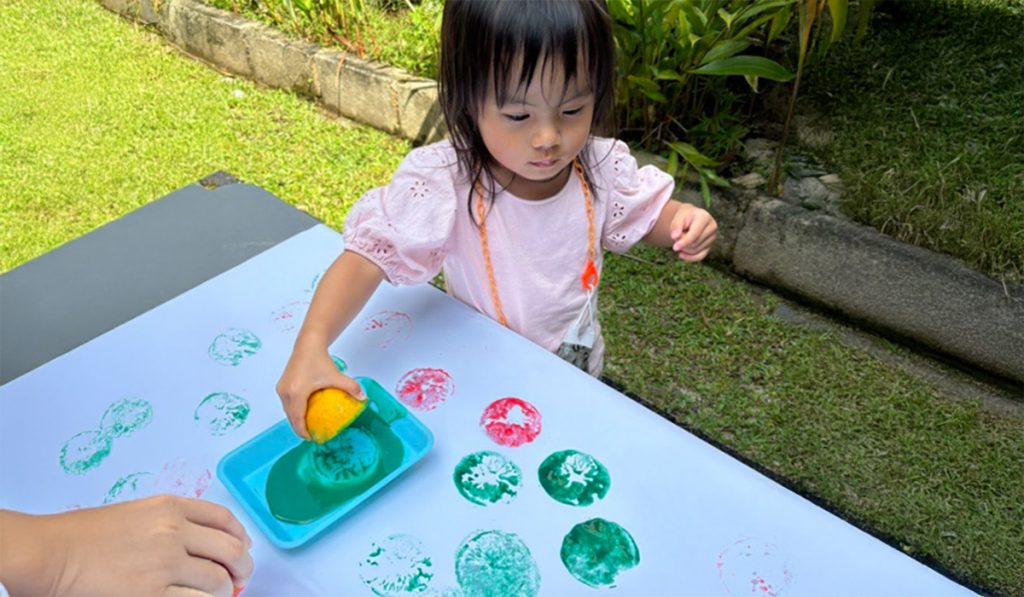
In early childhood education, arts and crafts serve different purposes.
Art is often open-ended and expressive. There’s no “right” outcome—just the process of exploring, expressing, and experimenting.
Craft, on the other hand, is usually more structured. Children follow steps to create a specific end product, which helps them learn sequencing, planning, and attention to detail.
Teachers often refer to this as “process versus product.” At Heartfield, we value both, but especially the process. That’s where the richest learning happens.
In our kindergarten classrooms, children explore a wide variety of art and craft activities:
- Finger painting allows them to mix colours and feel the texture of paint on their hands.
- Collage-making with recycled materials to spark creativity and raise awareness about caring for the environment.
- Printmaking with sponges, vegetables, or leaves to help them discover patterns and repetition.
- Festival crafts that connect children to cultural traditions and shared celebrations.
- 3D sculptures using clay, paper, or natural materials, to build their spatial awareness and fine motor control.
- Group murals to encourage collaboration, nudging every child to contribute to a larger story.
Each activity has a purpose. Behind the mess, deep, meaningful learning takes shape.
How Art Supports Cognitive and Language Development
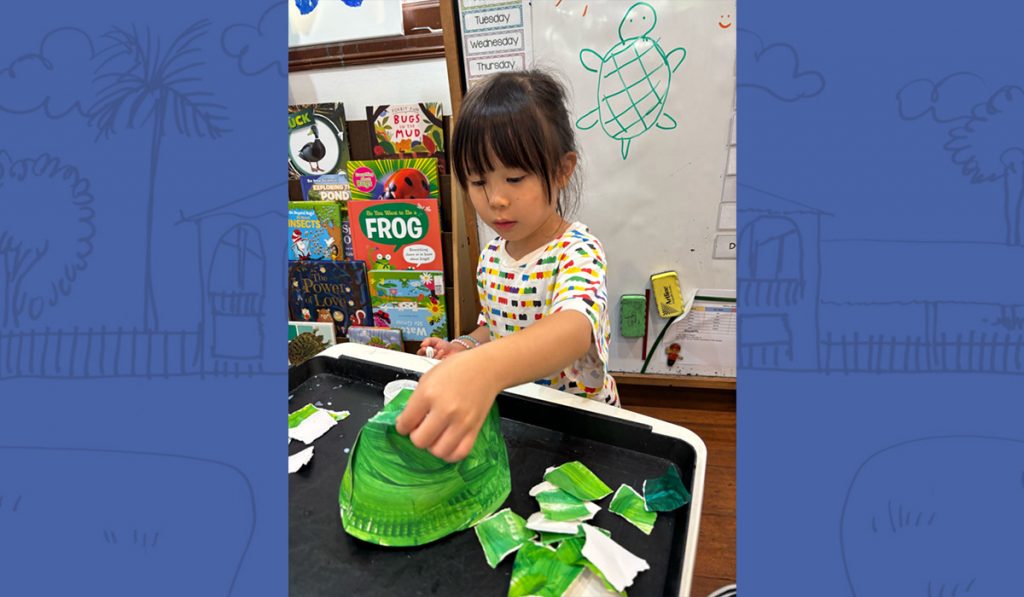
What happens in a child’s mind when they draw a tree with a blue trunk and purple leaves? Far more than you’d expect.
When children talk about their artwork—why they chose certain colours, what a shape represents, how a picture makes them feel—they stretch their vocabulary and build narrative skills. These conversations form early foundations for storytelling, sequencing, and self-expression.
Drawing also lays the groundwork for writing. As young children move from scribbles to symbols, they begin to understand that marks can carry meaning. This supports reading readiness and helps them to connect visual symbols with spoken words.
Even the simple act of deciding where to place an object or how to fill a space strengthens their visual-spatial reasoning and problem-solving skills. Such abilities don’t just support academic learning, they shape how a child makes sense of the world today.
Why Art and Craft Boosts Social and Emotional Growth
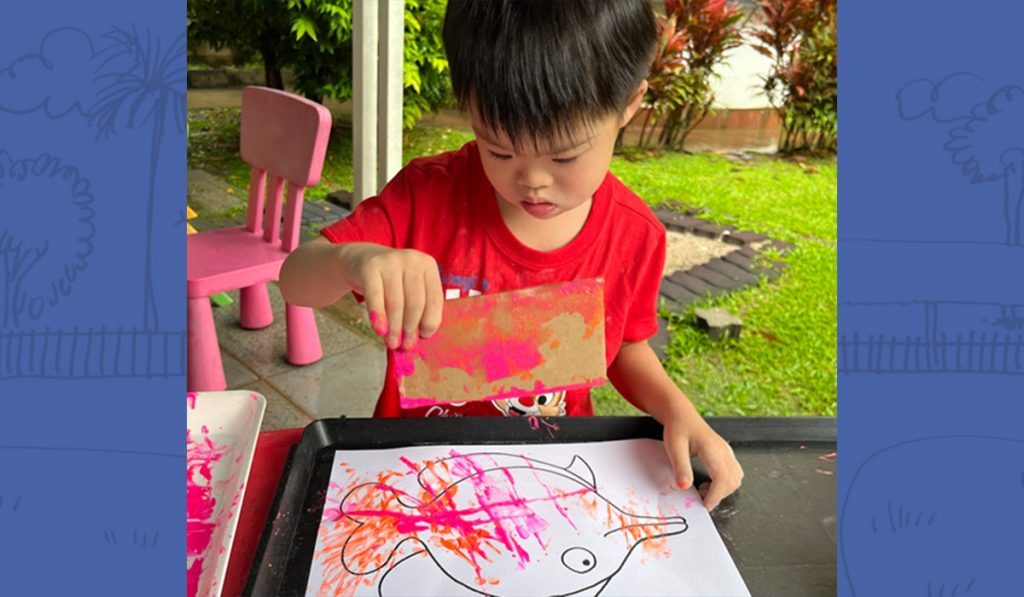
Art and craft activities support a child’s emotional development in subtle but powerful ways.
When children engage in creating, they learn how to focus, make choices, and follow through. Completing a piece gives them a sense of accomplishment. It builds resilience, particularly when they must try, fail, and try again.
These activities also teach important social skills. During classes, our kids learn to share materials, take turns, and work respectfully alongside others. In group settings, they often exchange ideas and offer encouragement—tiny but meaningful steps in learning empathy and cooperation.
One of the most cherished traditions here at Heartfield Kindergarten is the gallery walk. After completing their work, children view each other’s creations and listen as classmates share what inspired them. This practice nurtures empathy, encourages reflection, and helps our children to see the world through someone else’s eyes.
How Heartfield Kindergarten Uses Art and Craft Activities
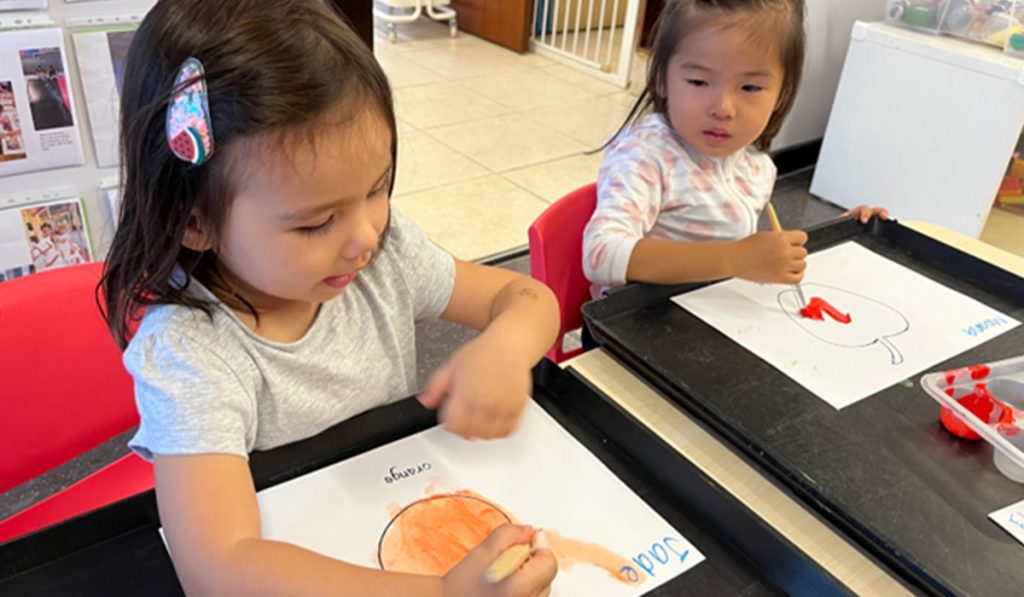
If you believe arts and crafts should be a part of your child’s learning journey, not just a weekend activity, you’ll feel right at home at Heartfield Kindergarten.
Here, art and craft are woven into the rhythm of each day. From storytelling, language, science and maths, to music and movement, creative expression always plays a central role. Our children work with open-ended materials that invite exploration and imagination, without the pressure of “doing it right.”
Every classroom includes thoughtfully designed spaces for painting, crafting, and building. These areas are always within reach, encouraging children to create whenever inspiration strikes.
Our teachers take an active but gentle role, observing closely, offering support when needed, and always encouraging children to think for themselves. And when a piece is finished, it doesn’t just go into a folder. It’s displayed with pride, a quiet celebration of voice, effort, and growth.
At Heartfield, art, craft and creativity form integral parts of our learning experience. Located at 31 Balmoral Road, we invite you to explore our visit campus. Call us at +65 6835 2354, email info@HeartfieldKindergarten.com, or visit our website to arrange a visit.
